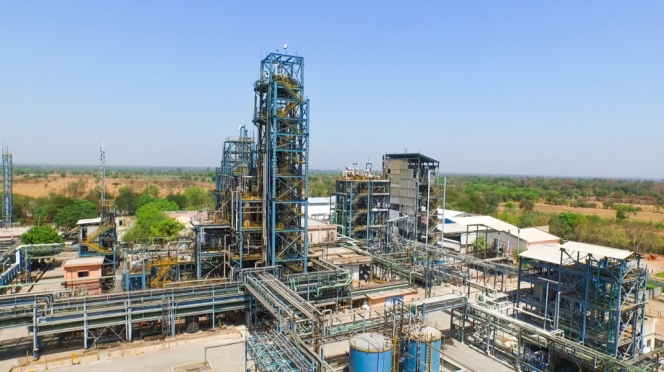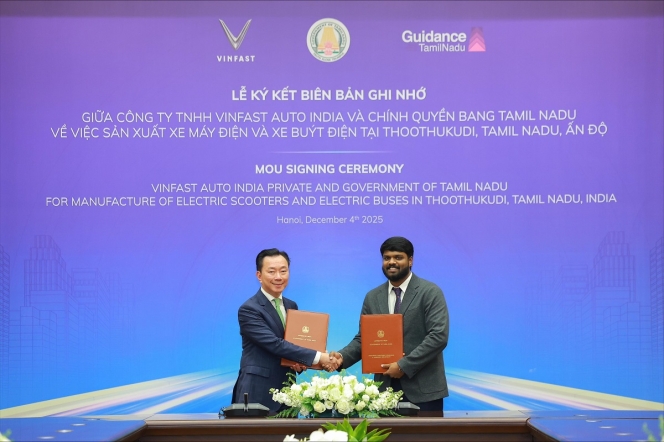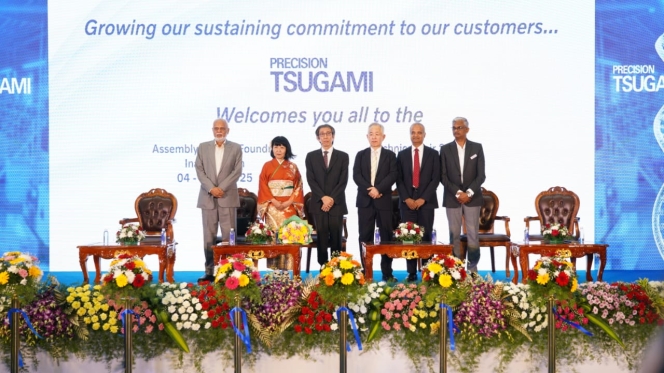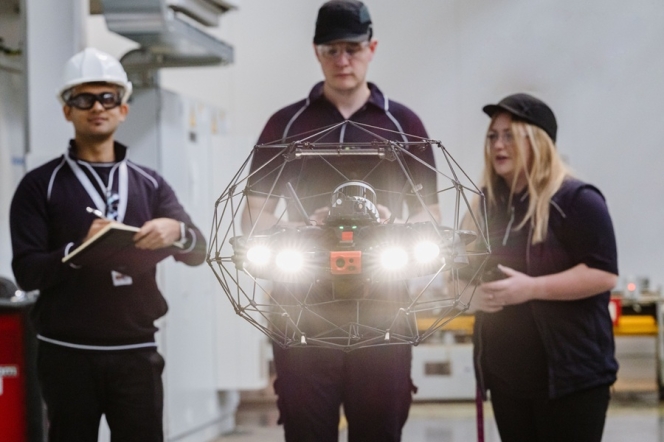- Federation of Automobile Dealers Association
- FADA
- C S Vigneshwar
- auto retail
- two-wheeler
- three-wheeler
- passenger vehicles
- tractors
- commercial vehicles
- electric vehicles
- Diwali
Auto Retail Sales Grow 11% In November, FADA Hopes For Stable Sales In December
- By MT Bureau
- December 09, 2024

The Federation of Automobile Dealers Association (FADA) has released the automotive retail sales data for November, which saw a total of 3,208,719 vehicles sold across categories, marking a 11.2 percent growth over November 2023.
This saw two-wheelers clocking its best-ever performance for the month at 2,615,953 units, up 15.8 percent YoY, three-wheeler at 108,337 units, up 4.2 percent YoY, passenger vehicles sales at 321,943 units, down 13.7 percent YoY, tractors sales at 80,519 units, up 29.8 percent YoY and commercial vehicles sales at 81,967 units, down 6 percent YoY.
C S Vigneshwar, President, FADA, stated, “While November was initially expected to build on its prior momentum, particularly due to the marriage season, dealer feedback suggests that this segment underperformed overall expectations. Although rural markets offered some support, primarily in the two-wheeler category, marriage-related sales remained subdued. The late occurrence of Deepawali at the end of October also caused a spillover of festive registrations into November, affecting the month’s sales trajectory.”
He shared that while November sales in certain segments were at record high, the marriage season’s contribution fell short of expectations, offering only limited relief from rural India.
The passenger vehicles sales in particular faced notable headwinds, on the back of weak market sentiment, limited product variety and insufficient new launches, compounded by the shift of festive demand into October.
“Although rural interest was present, it failed to significantly improve sentiment.
Inventory levels have reduced by about 10 days, but to remain high at around 65-68 days. FADA continues to urge OEMs to further rationalise inventory so that the industry can enter the new year on a healthier footing, reducing the need for additional discounts,” stated Vigneshwar.
On the CV sales he explained that the segment also struggled due to restricted product choices, older model issues, limited financier support, and the absence of major festivals in November following a strong October.
“External elements such as elections, a slowdown in coal and cement industries, and weak market sentiment also weighed heavily on this category,” he said.
Going forward he expects that with the prospects of a bumper Kharif harvest is likely to temper food inflation and the broader macroeconomic environment appears will improve, potentially aiding consumer sentiment in the months ahead.
“However, the immediate December outlook derived from dealer feedback is mixed. Category-wise Expectations:
Two-wheelers: Dealers suggest that while some buyers remain hesitant—either awaiting new-year models or influenced by subdued post-festive sentiment—others could be drawn by potential year-end discounts and stable rural demand. Although momentum may not be robust, incremental schemes and easing inflation could lend mild support, placing two-wheeler on a cautiously positive footing.
Passenger vehicles: In the passenger vehicles segment, heavy discounting and improved product availability are expected to help offset weak consumer sentiment and a general year-end lull. While some customers are deferring purchases for new-year models, overall interest could pick up due to aggressive offers and end of year promotions. This sets a tone of cautious optimism, with a moderate chance of improved sales compared to November.
Commercial vehicles: The commercial vehicles category faces a more challenging environment. Factors such as subdued infrastructure activity and customers holding back for newer model-year vehicles continue to dampen demand.
“Nonetheless, selective OEM schemes and year-end offers may provide a limited lift. On balance, while the CV segment’s expectations are not uniformly positive, there is some hope that targeted incentives and stable financing conditions could prevent a sharper decline. In sum, while the near-term outlook for December is not overwhelmingly strong across segments, it leans towards stability with pockets of potential growth, underlining a sentiment that remains overall remains cautiously optimistic.
| Category | Nov '24 | Nov '23 | Change (in units) | Change (in %) | Sept '24 | Change (in %) |
| YoY | YoY | MoM | ||||
| Two-wheeler | 2,615,953 | 2,258,970 | 356,983 | 15.80% | 2,065,095 | 26.67% |
| Three-wheeler | 108,337 | 103,939 | 4,398 | 4.23% | 122,846 | -11.81% |
| E-Rickshaw (P) | 40,391 | 41,718 | -1,327 | -3.18% | 43,982 | -8.16% |
| E-Rickshaw with Cart (G) | 5,423 | 3,188 | 2,235 | 70.11% | 5,892 | -7.96% |
| Three-wheeler (Goods) | 10,940 | 10,524 | 416 | 3.95% | 12,709 | -13.92% |
| Three-wheeler (Passenger) | 51,466 | 48,418 | 3,048 | 6.30% | 60,169 | -14.46% |
| Three-wheeler (Personal) | 117 | 91 | 26 | 28.57% | 94 | 24.47% |
| Passenger Vehicle | 321,943 | 373,140 | -51,197 | -13.72% | 483,159 | -33.37% |
| Tractor | 80,519 | 61,996 | 18,523 | 29.88% | 64,433 | 24.97% |
| Commercial Vehicle | 81,967 | 87,272 | -5,305 | -6.08% | 97,411 | -15.85% |
| LCV | 47,530 | 49,751 | -2,221 | -4.46% | 56,015 | -15.15% |
| MCV | 5,473 | 5,476 | -3 | -0.05% | 6,557 | -16.53% |
| HCV | 24,441 | 27,635 | -3,194 | -11.56% | 29,525 | -17.22% |
| Others | 4,523 | 4,410 | 113 | 2.56% | 5,314 | -14.89% |
| Total | 3,208,719 | 2,885,317 | 323,402 | 11.21% | 2,832,944 | 13.26% |
Representational image: David McBee/Pexels
- Gujarat Fluorochemicals
- World Bank Group
- International Finance Corporation
- GFCL EV
- Vivek Jain
- Dr. Bir Kapoor
- Imad N Fakhoury
Gujarat Fluorochemicals Secures $50 Million IFC Investment For Battery Materials Facility
- By MT Bureau
- December 05, 2025

Gujarat Fluorochemicals (GFL), a fluorochemicals company, announced a partnership with the International Finance Corporation (IFC), a member of the World Bank Group. The IFC is investing approximately USD 50 million in GFL’s subsidiary, GFCL EV Products (GFCL EV), through the subscription of compulsorily convertible instruments.
The investment will be utilised towards what is claimed to be India’s first integrated battery materials facility. The project is intended to drive high-value manufacturing, create jobs, strengthen India’s position in global supply chains and advance national priorities of energy security, transport electrification and local value creation.
GFCL EV aims to reinforce India’s emergence as a competitive player in the global battery-materials value chain. The company has integrated manufacturing capabilities for battery chemicals with backward integration into key raw materials.
GFCL EV’s current product portfolio, catering to both electric vehicle and energy storage sectors, includes:
- Battery chemicals – electrolyte salt LiPF6, electrolyte formulations, additives for enhanced performance.
- Cathode active materials (LFP).
- Binders (both PVDF and PTFE).
Vivek Jain, Chairman, INOXGFL Group, said, “We are delighted to welcome IFC as a partner in GFCL EV. This milestone reinforces our vision for a greener future supported by IFC’s global expertise and commitment to sustainable development, aiding in accelerating India’s energy transition. IFC has a history of investing in sustainable businesses demonstrating long-term value creation. Their investment in GFCL EV is an endorsement of our differentiated model and growth trajectory. This partnership underlines our global leadership in battery materials and shall create long-term sustainable value for existing shareholders.”
Dr. Bir Kapoor, DMD and CEO, Gujarat Fluorochemicals, added, “This is IFC’s first investment in a battery materials company in India, marking a major milestone for India’s battery materials ecosystem. This capital raise enables us to scale up our manufacturing capacity for advanced battery materials strengthening India’s position in the global supply chain. GFCL EV stands among the few large-scale integrated battery materials manufacturers worldwide, with a portfolio that covers more than 50 percent of the LFP battery cell bill of materials”.
Imad N Fakhoury, IFC Regional Division Director for South Asia, said, “We are happy to partner with GFCL EV on this milestone initiative to advance value‑added manufacturing in India. As the country scales its electric vehicle and energy‑storage sectors, India has a clear opportunity to strengthen domestic capacity in key battery materials, set new benchmarks for high‑performance supply chains, and secure its place in the global market for advanced energy technologies. This investment forms part of IFC’s programmatic efforts to strengthen India’s e‑mobility value chain, and is enabled by a One WBG approach that builds the market and localizes global value chains, advancing the Make in India initiative. It will enable first‑of‑its‑kind greenfield battery manufacturing and build the capabilities India needs to play a larger role in high‑value components worldwide.”
VinFast Announces Expansion Of Tamil Nadu Facility For Electric Bus And Two-Wheelers
- By MT Bureau
- December 04, 2025

Vietnamese automotive company VinFast has signed a Memorandum of Understanding (MOU) with the Government of Tamil Nadu to expand its existing facility in the SIPCOT Industrial Park in Thoothukudi. The expansion targets the production of electric buses and e-scooters, alongside electric cars.
The Government of Tamil Nadu will allocate approximately 200 hectares (around 500 acres) of land adjacent to VinFast’s existing facility. The state will also provide support for securing permits and establishing infrastructure connections such as electricity, water and road access.
As the second phase of its existing USD 2 billion commitment, VinFast will invest USD 500 million in Thoothukudi to develop dedicated workshops and production lines for electric buses and e-scooters, covering manufacturing, assembly, testing and related operations. The Government of Tamil Nadu will apply all applicable incentives and financial support measures for this proposed investment.
The existing Thoothukudi facility covers 400 acres and has an initial annual capacity of 50,000 electric vehicles, which is being expanded to 150,000 units.
The initiative is expected to increase supply chain localisation, create additional employment opportunities and support workforce skill development in the region. Since entering the Indian market, VinFast has expanded its comprehensive EV ecosystem spanning manufacturing, distribution, charging infrastructure, aftersales services and battery recycling.
Pham Sanh Chau, Asia CEO, VinFast, said, “The proposed expansion of the Tamil Nadu plant will enable us to broaden our product lineup in India, from electric cars to electric buses and e-scooters, allowing us to meet a wider range of customer needs. We also expect this initiative to create new job opportunities, advance localization and strengthen the skills of the local workforce. VinFast believes that Tamil Nadu will continue to serve as a strategic hub in our global expansion journey and will play an important role in supporting India’s green mobility goals in the years ahead.”
Dr. T.R.B. Rajaa, Minister of Industries of the Government of Tamil Nadu, said, “We welcome VinFast’s next phase of planned development of the electric cars in Tamil Nadu and the new introduction of electric bus and e-scooters production will generate additional momentum for the green transportation strategy of both Tamil Nadu and India. The state government is committed to working closely with VinFast and ensuring favourable conditions throughout the implementation process to deliver lasting benefits for the community and the regional economy by ensuring that Vingroup thrives in Tamil Nadu and their flourishing ecosystem provides jobs for Tamil Nadu.”
Tsugami Inaugurates INR 3 Billion Assembly & Foundry Plant In Chennai
- By MT Bureau
- December 04, 2025

Japanese precision engineering machine tool company Tsugami has formally inaugurated its assembly and foundry infrastructure in Oragadam, on the outskirts of Chennai. The INR 3 b billion investment is claimed to be the largest ever by a Japanese machine tool maker in India, and the first foundry in India by a Japanese machine tool maker.
The Chennai facility is one of only three global facilities for Tsugami, the others being in Japan and China. The new 300,000 sqft facility, situated at SIPCOT Industrial park Oragadam, will generate over 1,000 jobs, employing 700 professionals directly and 300 indirectly.
The newly inaugurated infrastructure enhances the volume production of high-performance machine tools in India. It has an annual capacity of 3,000 machines, while the foundry has an installed annual capacity of 6,000 tonnes.
The new infrastructure enables increased indigenous production of Tsugami machine tools. The facilities enhance the scale of production while maintaining quality standards.
The inauguration was attended by Arun Roy, IAS, Secretary – Industries, Govt. of Tamil Nadu and Kaoru Shiraishi, Director General, JETRO.
Kaoru Shiraishi, said, “Today’s inauguration is yet another excellent example of the long-standing relationship built on trust, innovation, and mutual respect between Japan and India. There is immense value creation possible when one combines Japanese technology and quality with India’s talent, energy and growing market strength. This new facility represents a deep commitment to contributing to India’s development, creating local employment and strengthening industrial capabilities. Am confident that this facility will become a model of excellence and a symbol of our enduring partnership. JETRO remains committed to supporting Japanese companies in India and to fostering an environment where collaboration and innovation can thrive.”
Arun Roy, said, “For several decades, Japan has been one of Tamil Nadu’s most trusted partners in economic development, cooperation and advanced manufacturing. Japanese companies have consistently shown confidence in TN’s talent, infrastructure, and business-friendly environment. Today’s inauguration is a major reaffirmation of that partnership & confidence. This new facility reflects the values that define Japanese industry – precision, discipline, innovation and an unwavering commitment to excellence. Am delighted that this facility will generate significant employment for our youth who are known globally for their technical skills and dedication. Am confident that the collaboration between Japanese expertise and local talent will set new benchmarks & create new opportunities for local suppliers in Tamil Nadu.”
K Balasubramanian, Founder, Tsugami India and Chairman & MD, Proteck Machinery India, said, “The new facility is a big step-up for India’s high-precision manufacturing ecosystem as Tsugami is globally respected as among the pioneering players in the precision engineering space known for their innovation and unwavering commitment to excellence. This facility is surely going to lead to a snowballing effect on India’s ability to support manufacturing of components and products that need precision engineering, a much needed capability. Availability of human resources with superior competence in industrial manufacturing is one of the significant factors that compelled us to choose Chennai and Tamil Nadu for this new facility. It’s a truly proud moment for each of us at Tsugami India today and we are truly indebted to the Tsugami Corporation board and management for their unwavering commitment to India and Tamil Nadu.”
Jaguar Land Rover Trials Drones To Cut Inspection Time By 95% At EV Facility
- By MT Bureau
- December 04, 2025

Tata Motors-owned British marquee luxury brand Jaguar Land Rover (JLR) is trialling drone technology at its Electric Propulsion Manufacturing Centre (EPMC) in Wolverhampton, successfully reducing machinery and site inspection time by up to 95 percent. The pilot is an important step forward in operational efficiency and employee safety, aligning with JLR's vision for its factories of the future.
The Elios 3 drone by Flyability reaches high and confined spaces, allowing maintenance teams to inspect equipment safely from the factory floor, eliminating the need for elevated platforms and reducing risk. Operated via tablet, the drone delivers a live 3D map to identify and troubleshoot issues. This helps JLR prevent costly maintenance downtime while freeing up employees’ time for business tasks.
The drone uses Light Detection and Ranging (LiDAR) sensors to create detailed 3D maps of the surrounding environment. Additionally, it features a thermal camera to help pinpoint overheating components or insulation failures, helping optimise energy use by detecting inefficiencies early and supporting JLR’s efforts to reduce its overall operational emissions.
Nigel Blenkinsop, Executive Director of Industrial Operations, Jaguar Land Rover, said, “As we transform our facilities, we’re rethinking every part of our factories, including how we maintain and operate them. Trials like this one with advanced drone technology are helping us improve employee safety, reduce maintenance downtime and operate more efficiently. Just as importantly, they’re helping upskill our people in the latest digital technologies, ensuring our teams are part of our factories of the future.”
Shantnu Mehta, Project Engineer, Jaguar Land Rover, said, “I never imagined I’d be learning to fly drones as part of my role. It’s been exciting to learn how to use this technology and the skills I’ve developed will stay with me throughout my career. Being part of such an innovative project and contributing to how we’re transforming our factories for the future is something I’m genuinely proud of.”
Following successful trials at EPMC, the next phase will take place at JLR’s Logistics Operations Centre (LOC) in Solihull – a vast warehouse space equivalent to thirteen football pitches (approx. 91,800 square metre). Here, the drone will be equipped with barcode scanners to automate inventory checks, replacing manual processes and enabling faster, accurate stock updates. This will help improve safety, reduce errors, and support smarter decisions on space, stock levels and supply flow.
The initiative is part of JLR’s GBP 3.8 billion annual investment into industrial transformation, new products and technology, and is being explored through its Open Innovation programme. It also supports JLR’s Future Skills programme, which aims to train 29,000 employees in electrification and digital skills.





Comments (0)
ADD COMMENT